The rms value of potential difference V shown in the figure is
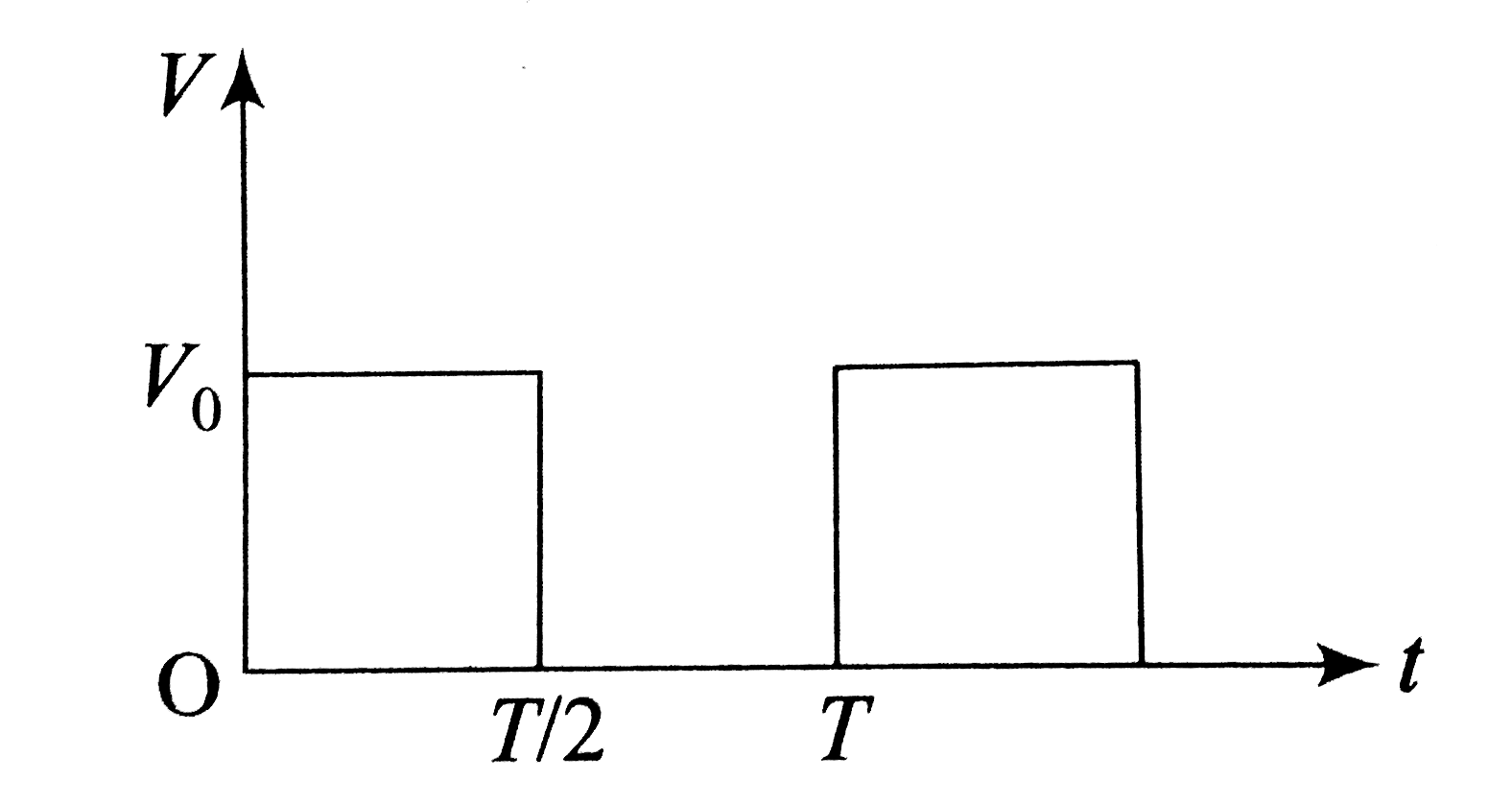
V0√3
V0
V0√2
V02
The correct Answer is:C
V=V0 for 0≤t≤T2
V = 0 for T2≤t≤T
Vrms=⎡⎣∫T0V2dt∫T0dt⎤⎦1/2=⎡⎢⎣∫T/20V20dt+∫TT/2(0)dt∫T0dt⎤⎥⎦1/2
=[V20T[t]T/20]1/2=[V20T(T2)]1/2=V0√2

Topper's Solved these Questions
- ALTERNATING CURRENT Book:NCERT FINGERTPS ENGLISHChapter:ALTERNATING CURRENT Exercise:HOTS
Explore 8 Videos
- ALTERNATING CURRENT Book:NCERT FINGERTPS ENGLISHChapter:ALTERNATING CURRENT Exercise:NCERT
Explore 7 Videos
- ATOMS Book:NCERT FINGERTPS ENGLISHChapter:ATOMS Exercise:Assertion And Reason
Explore 15 Videos
Similar Questions
Two protons A and B are placed in between the two plates of a parallel plate capacitor charged to a potential difference V as shown in the figure. The forces on the two protons are identical.
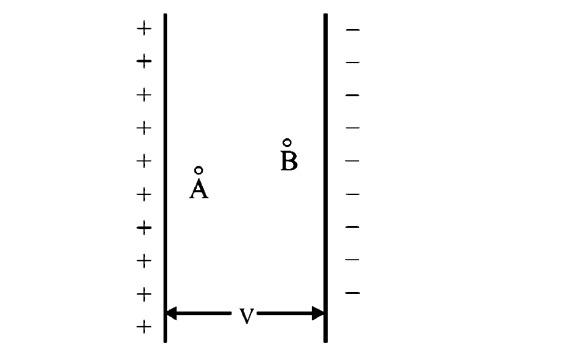
View SolutionThe sinusoidal potential difference V shown in figure applied across a resistor R produces heat at a rate W. What is the rate of heat disspation when the squre wave potential diffrence V2 as shown in figure is applied across the resistor?

View Solution
Knowledge Check
The potential difference between A and B as shown in figure is
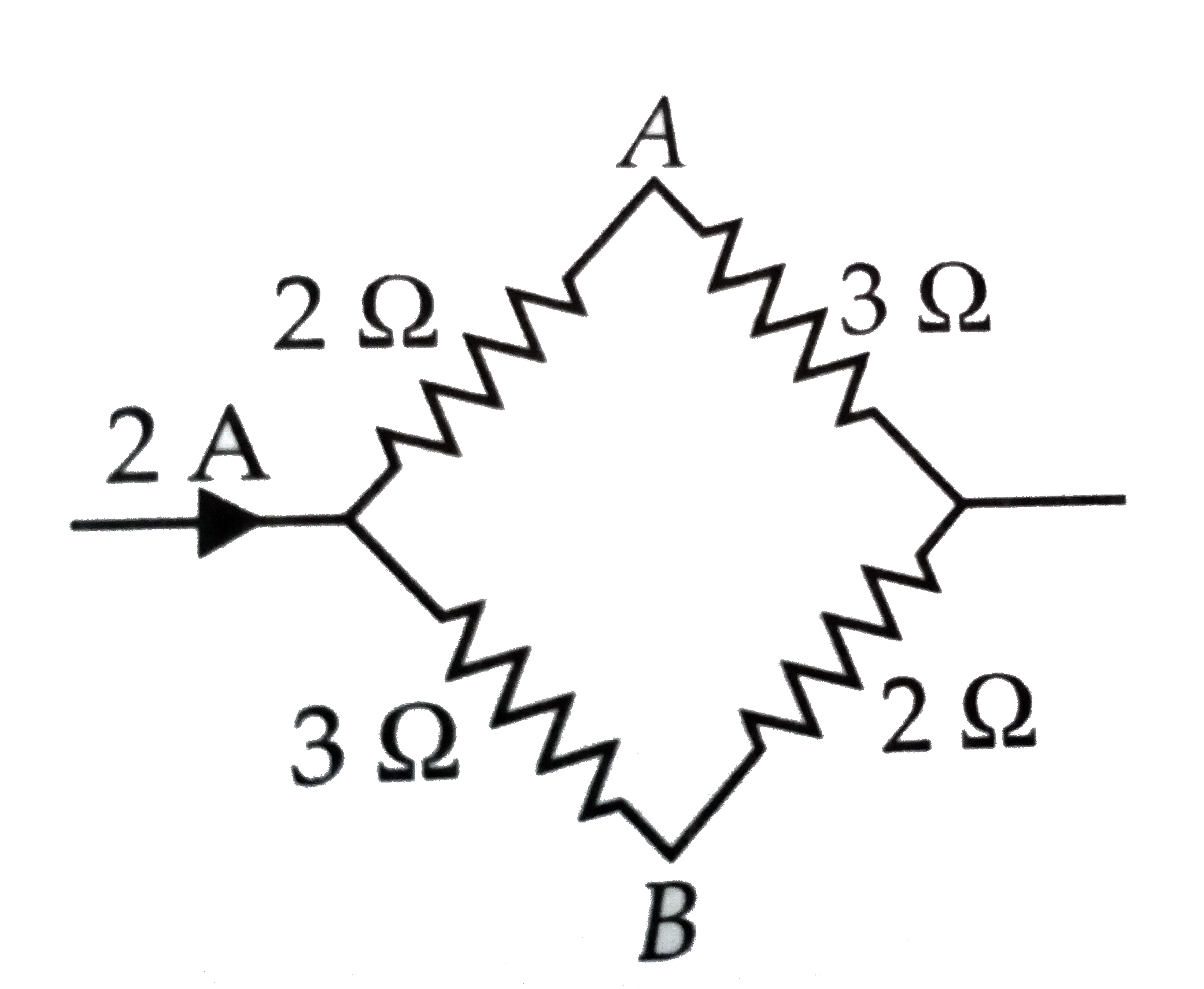 A1VB2VC3VD4V
A1VB2VC3VD4VThe value of resistance is 10.845Ω and the urrent is 3.23Ã…. On multiplying, we get the potential difference is 35.02935 V. the value of potential difference in terms of significant figures would be
A35VB35.0VC35.029 VD35.03 V
Find the potential difference between A and B as shown in the figure
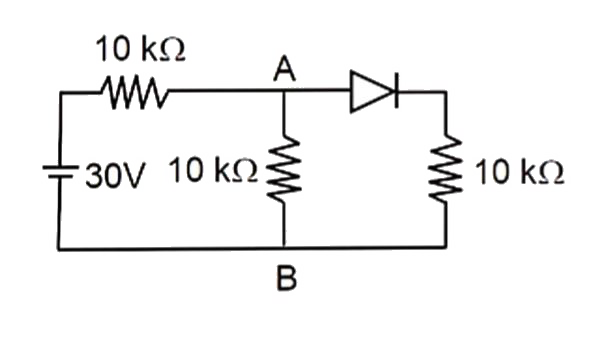
View SolutionThe circuit shown in the figure is a series LCR circuit connected to an AC source. This circuit has many important applications in practical electronic systems. In the given circuit, L=20mH and frequency of applied alternating potential difference is ω=8000rad/s. Initial phase of applied potential difference has such a minimum value that initial value of instantaneous potential difference is half of is peak value while initial phase of current in the circuit has such a minimum value that initial value of instantaneous current equals its peak value. We also observe that current in the circuit leads the net voltage across the circuit. It is given that peak values of potential difference across R and L are I VR(peak))=25V
V(L)peak=20V
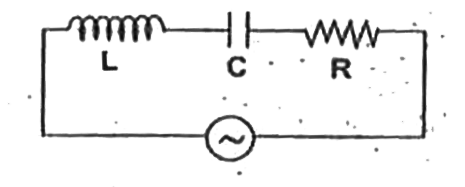
rms value of potential difference across capacitor is nearly
View SolutionA part of a complete circuit is shown in the figure . At some instant the value of current I is 1 A and it is decreasing at a rate of 102As−1 . The value of the potential difference VP−VQ, (in volts) at that instant , is ____________.

View SolutionPotential difference across AB in the network shown in figure.
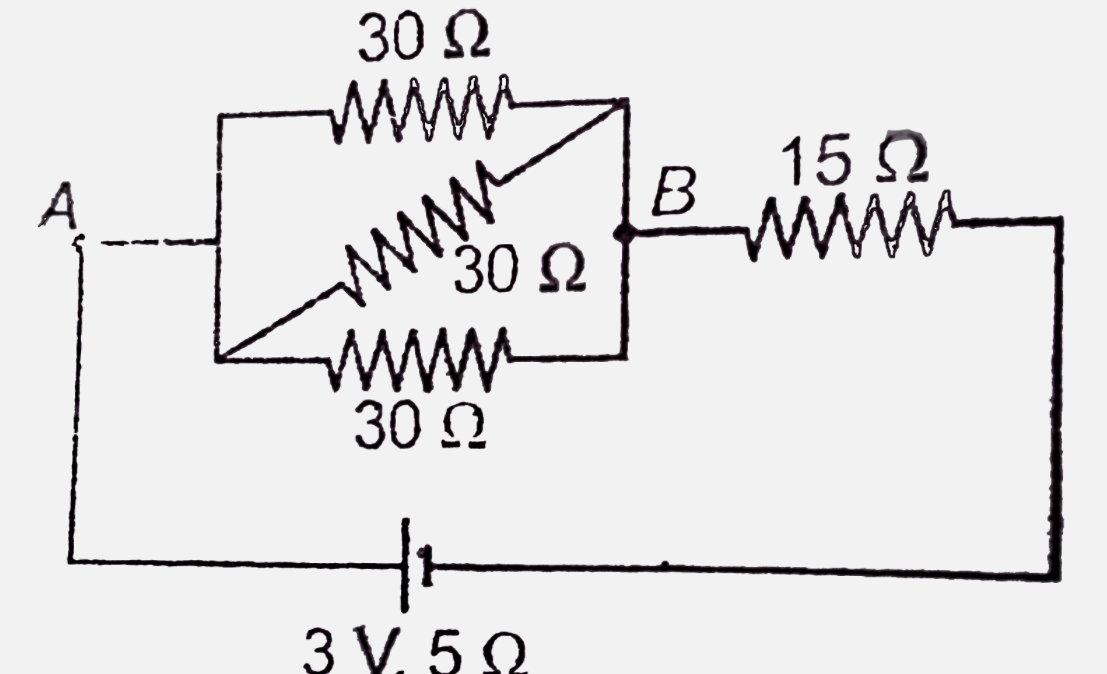
View SolutionCalculate the value of resistance R in the circuit shown in the figure so that the current in the circuits is 0.2A. What would be the potential difference between the points B and E ?
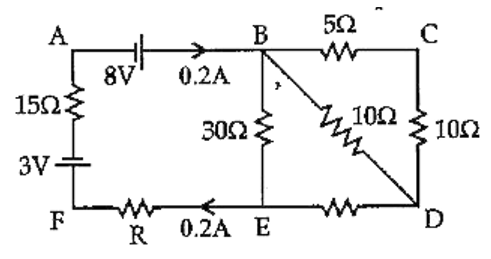
View SolutionThe potential difference VA−VB for the circuit shown in fig. is. −(22/x)V. find the value of x.
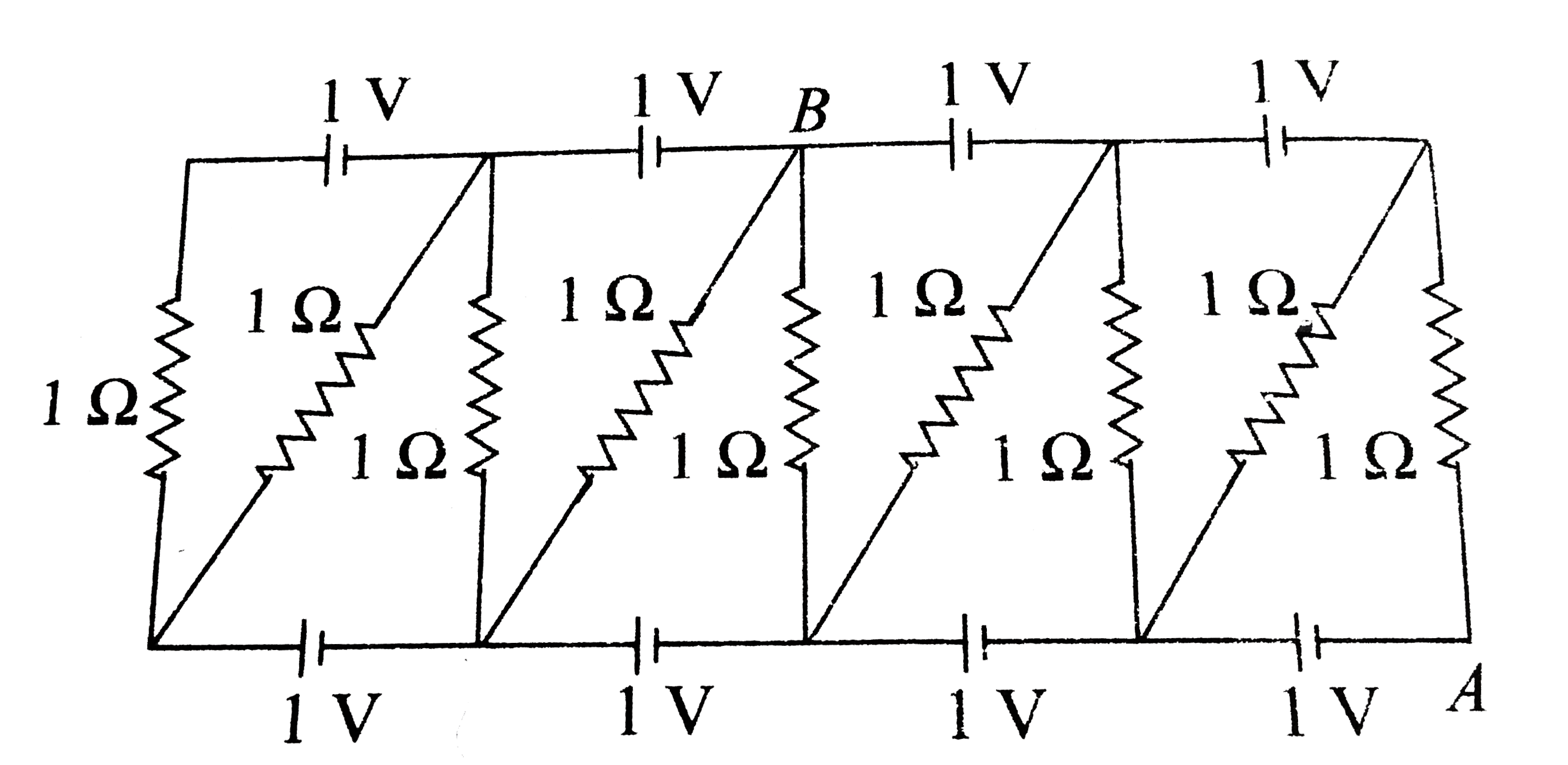
View Solution

